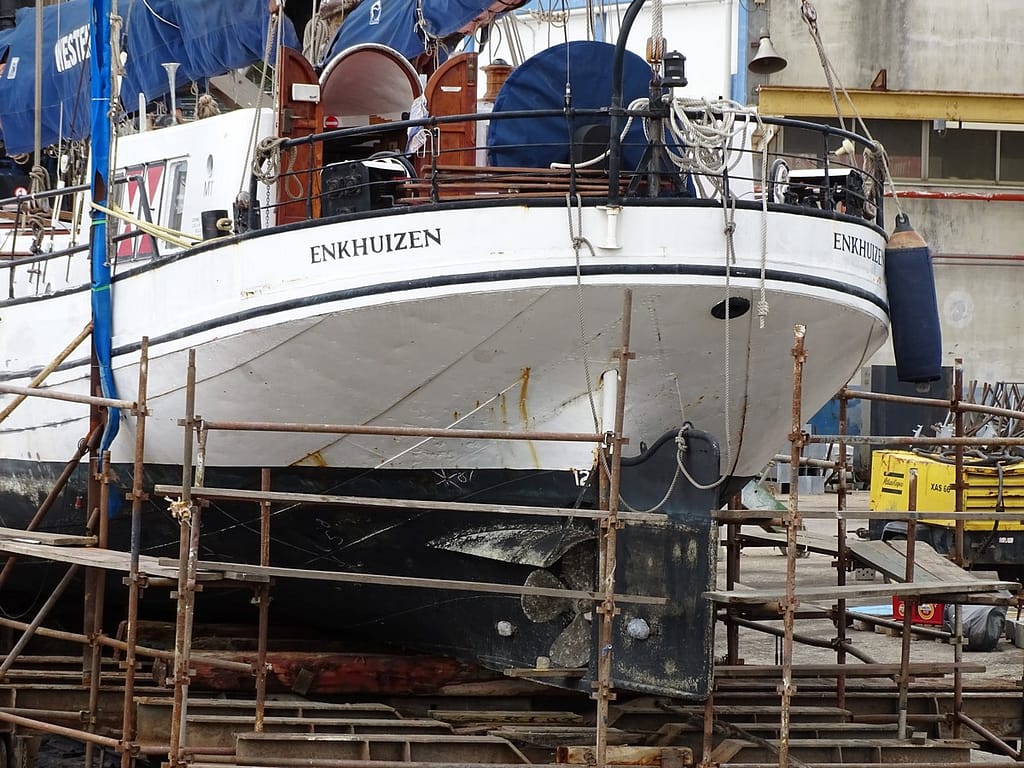Knocking, looking, measuring...
For a steel vessel, the first step is always to tap the vessel. This is done to detect any weak or suspicious spots. The condition of the ship is also examined as closely as possible on the inside. During the tapping, we look for weak spots in the metal and, in case of doubt, we will measure the hull.
Corrosion! This almost always comes from within.
The thickness of the steel (skin thickness) is measured with an ultrasonic measuring instrument. Here, only one side of the material needs to be measured and therefore no holes need to be drilled in the ship. In an ultrasonic flat thickness measurement (skin thickness measurement), the plate thickness is measured vessel below the waterline.

This can be done with steel, iron and aluminium.
Thus, each alloy has its own special properties that must be taken into account.
The ultrasonic meter that is used is suitable for various materials.
For example, it is also possible to take thickness measurements above the waterline. For example, the wall thickness of a mast, or wall thickness of a tank.
See further on the website.
Thickness measurement steel
Although the gauge can also measure through layers of paint, I only measure on the bare metal. Experience shows that this is the best way to get accurate readings on a boat. In other words: Because you would like to have certainty, the best way is to remove the paint system at the measurement points (approx. 1 cm² per point) down to the bare metal.
Reporting
Immediately after the measurement, the findings become very clear to you as a customer and will be discussed.
A clear survey report will be drawn up afterwards. This includes a starboard and port side view of the underwater ship, with the points that were measured.
Extra service
During the survey, the rivets, anodes, propeller shaft clearance, propeller, bow thruster, rudder bearings and rudder blade are also examined.
As one of the inspectors in the country, I can print out the inspection report for you on the spot and documents of interest can be scanned for later use regarding your survey.
For a purchase or insurance company that requires an inspection, you can leave your inspection to us.

